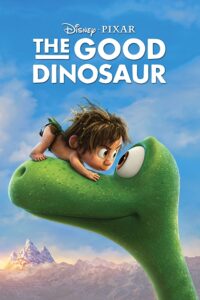How Much Is Dinosaur Poop Worth? A Collector’S Guide
Dinosaur poop, also known as coprolite, can vary in price from $20 to $10,000. The worth depends on size, condition, and scientific value.
Enthusiasts and collectors often marvel at the unique aspects of the prehistoric world, and dinosaur poop presents an intriguing vestige of ancient life.
Coprolites hold value not just for their rarity but also for the insights they provide into the diets and habitats of extinct creatures.
With a market ranging from casual collectors to serious paleontologists, each piece’s valuation hinges on its preservation, visual appeal, and the information it carries. Navigating the market requires a blend of scientific curiosity and astute collecting acumen.
Whether for education or novelty, investing in these fossilized feces offers a tangible connection to the bygone eras of our planet.

Valuing Dinosaur Fossilized Feces
Have you ever wondered about the worth of dinosaur poop? Dinosaur fossilized feces, also known as coprolites, are unique collectibles.
They reveal diet and behavior of ancient creatures. Determining their value can be as complex as the dinosaurs themselves. Let’s dig into the factors that give coprolites their price tag.
Factors Influencing Value
Several factors play into the value of dinosaur coprolites. Think of them as clues to the past.
- Size matters: Bigger coprolites often fetch higher prices.
- Preservation counts: Intact specimens with clear, visible details are more valuable.
- Content is key: Coprolites with recognizable plant or animal matter command higher interest.
- Rarity: The less common the specimen, the higher the value.
- Provenance: A clear history increases trust and thus value.
Record Sales And Notable Auctions
The auction block tells tales of dinosaur poop prices gone wild. Here’s a glimpse at record sales.
| Item | Sale Price | Auction House | Date |
|---|---|---|---|
| Giant Coprolite | $10,370 | Sotheby’s | 2014 |
| T-Rex Poop | $5,185 | Heritage Auctions | 2016 |
Each sale sets a precedent for dinosaur poop collectors worldwide. The thrill of the auction adds to the coprolite’s story and worth.

Credit: www.amazon.com
Identifying Authenticity
What’s rarer than a diamond? Some say dinosaur poop! But how do we know if it’s the real deal? Let’s dig into how collectors can ensure their coprolite, or fossilized feces, is genuine.
Scientific Methods Of Verification
Experts use cool tech to verify ancient droppings. Here’s how:
- Chemical analysis tells us the poop’s composition.
- Microscopic examinations reveal tiny details.
- Geochronology dates the sample.
These tools help sort real fossils from fakes.
Common Fakes In The Market
Fake fossils flood the market. Look out for these:
| Type of Fake | How to Spot |
|---|---|
| Resin Copies | Too perfect, uniform color |
| Rock Imitations | Wrong texture or density |
| Painted Poop | Color scrapes off |
Remember to check suspicious samples with a professional.
Scale Of Rarity
Did you know that even dinosaur poop can be a treasure? It’s true! Just like precious gems, dinosaur droppings have a unique scale of rarity that makes them valuable to collectors. Let’s dig into what makes these ancient feces so special.
Types Of Coprolites
Dinosaur poop, or coprolites, come in all shapes and sizes. Scientists can categorize them by the dinosaur species that produced them. Different types include:
- Herbivore droppings: Usually bigger and contain plant remains
- Carnivore droppings: Smaller, with bits of bones and teeth
- Omnivore droppings: A mixture of plant and animal traces
The variety of these specimens adds to their overall rarity and hence their value.
Location And Age Impact
The location and age of coprolites affect their value greatly. Typically, the older and the more hard-to-reach the area they are found in, the rarer they are. This includes:
| Location | Impact on Rarity |
|---|---|
| Remote Regions | More Rare |
| Common Fossil Sites | Less Rare |
Additionally, poop from the Jurassic period is generally more valuable than that from later periods due to its age.
Collectors’ Market Dynamics
The market for dinosaur poop, or coprolites, is as fascinating as it is unusual. Unlike traditional fossils, coprolites offer a unique glimpse into the dietary habits of ancient creatures. Collectors and enthusiasts pay top dollar for these prehistoric remnants.
Understanding the dynamics of the collectors’ market is crucial for any aspiring collector looking to invest in these ancient treasures.
Where Collectors Find Specimens
Finding quality coprolites is a thrilling quest. Enthusiasts often frequent specific venues to add to their collections:
- Fossil shows: bustling hubs where collectors gather to buy, sell, or trade specimens.
- Online auctions: where rare finds go to the highest bidder, often from the comfort of home.
- Specialty shops: stores dedicated to fossils and natural history items offer curated selections.
- Dig sites: for the hands-on collector, joining a dig can yield personal finds.
The Role Of Museums And Private Collectors
The dance between museums and private collectors is complex. Museums preserve specimens for public education and research. Private collectors, on the other hand, drive the market’s vibrancy. They often:
- Influence market demands: their preferences can spike interest in certain types of coprolites.
- Boost public interest: collectors sharing their finds on social media can attract new enthusiasts to the market.
- Support research: sometimes, rare specimens in private collections become subjects of scientific study.
In conclusion, whether for passion or investment, the collectors’ market for this niche field flourishes due to the symbiotic relationship between museums, private collectors, and the pursuit of history locked within these ancient stones.
Legal And Ethical Considerations
When we think of owning a piece of prehistory, dinosaur poop, or coprolites, come to mind. Yet, the thrill comes with responsibility.
Below we delve into the legal and ethical concerns surrounding the ownership and trade of these ancient treasures.
Fossil Trade Regulations
Rules govern the trade of dinosaur feces, just like other fossils. Many countries have laws to protect their natural heritage.
Collectors must observe these regulations to ensure that their specimens are legally obtained. In the U.S, the Bureau of Land Management oversees fossil collection on federal land. It is illegal to take anything from public land without permission.
On private land, permission from the landowner is a must.
The Debate Over Private Ownership
The topic of private ownership stirs debate.
- Scientists argue that fossils should remain public. They fear important findings may get lost in private collections.
- Collectors counter that private ownership can aid in the preservation of these relics.
- It is critical to balance personal passion with the global need for scientific research and education.
Being mindful of source authenticity, legal boundaries, and ethical implications is crucial for any collector.
As a steward of history, one holds a piece of the Earth’s past in their hands, and with it, the responsibility to safeguard it for future generations.
Caring For Coprolite Collections
Caring for Coprolite Collections begins with understanding that dinosaur poop, or coprolite, is not just any old rock. It is a valuable piece of prehistoric life.
Once the laughingstock of the fossil world, coprolites now inspire fascination and a desire to preserve these ancient excrements.
As with any collection, proper care and handling are paramount to maintaining value and integrity.
Collectors take pride in their coprolite treasures. Let’s explore the best ways to preserve these fascinating fossils.
Preservation Best Practices
To sustain your collection’s impeccable condition, certain measures must be taken. Fossils are delicate and require gentle care.
Here are the top guidelines for maintaining coprolites:
- Avoid harsh chemicals: Coprolites should never come into contact with aggressive cleaning agents.
- Minimal handling: Oils from skin can damage the surface, wear gloves when possible.
- Stable environment: Keep coprolites in a consistent and moderate climate to prevent cracking.
- Professional repairs: Trust experts with any needed restoration work on your coprolites.
Display And Storage Tips
Showcasing your coprolite collection in the best light calls for smart display and storage. The right setup can make a significant difference:
- Use proper mounts: Secure your coprolites with mounts that do not apply stress to the fossil.
- Shield from light: Display coprolites away from direct sunlight to prevent fading and drying out.
- Opt for glass cases: These cases protect from dust and environmental pollutants.
- Maintain organization: Label your coprolites’ species, age, and place of discovery for easy reference.
With the above practices, your coprolite collection will not only remain intact but will also tell a story that dates back millions of years.
Coprolite collectors around the world take pride in the history they preserve, and by following these simple steps, you can ensure that your collection continues to provide insights into the past for generations to come.
Frequently Asked Questions On How Much Is Dinosaur Poop Worth? A Collector’s Guide
How Much Is Dino Dung Worth?
The value of Dino dung, or coprolites, varies, but collector pieces can range from $20 to several hundred dollars depending on size, condition, and scientific importance.
Is Dinosaur Poop Rare?
Dinosaur poop, known as coprolite, is considered a rare and valuable fossil for scientists studying ancient ecosystems. Its scarcity adds to its importance in paleontological research.
Are Coprolites Valuable?
Coprolites, fossilized feces, can hold significant value for collectors and scientists, as they offer insights into ancient diets and environments. Their worth varies based on size, age, and what they reveal under examination.
How Can You Tell If A Rock Is Dinosaur Poop?
To identify dinosaur poop, known as coprolites, examine the rock’s shape, size, and contents. Fossilized feces often contain bone fragments and have a spiral or tubular form. Consulting a paleontologist can confirm identification.
Conclusion
Discovering the value of dinosaur feces can be a thrilling pursuit for collectors. This unique collectible blends history, science, and oddity. Remember, condition and size drive worth in this niche market. Embrace the journey into paleontology’s quirky side, and who knows?
Your next find could be a prized coprolite treasure.



